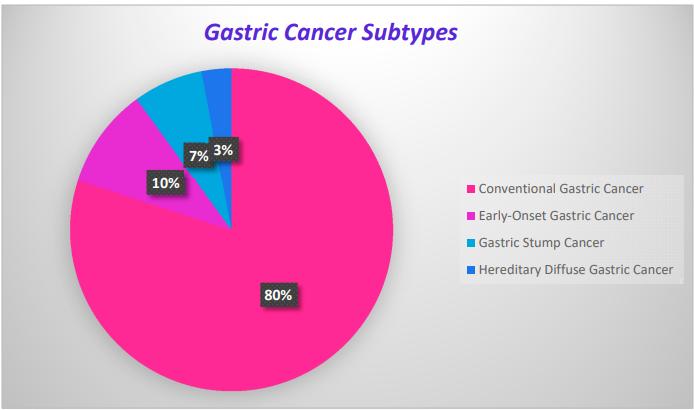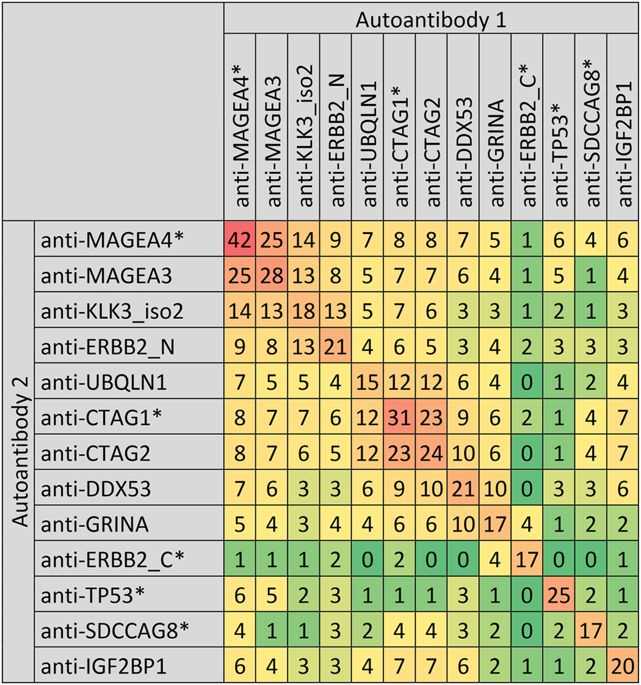NAA Associated Gastric Cancer
Natural autoantibodies (NAAs) against tumor-associated antigens (TAAs) have been found in the serum of patients with various types of cancers and may serve as biomarkers for early detection of gastric cancer (GC) as well. Empowered by our abundant technology methods, advanced technology platform, and experienced technical personnel, Creative Biolabs employs different approaches including ELISA, WB, peptide array, protein array, etc. for the assessment of the NAAs properties and early disease diagnosis. Creative Biolabs offers a comprehensive set of NAA services to assist our clients in autoantibody projects and GC research.
Background of Gastric Cancer
Although the incidence and mortality of the disease are declining globally when estimated in age-standardized figures, the absolute number of GC cases remains stable or may even increase due to the predicted growth of the world population and increasing longevity. GC continues to be an important healthcare problem from a global perspective.
 Fig.1 The different subtypes of GC.1
Fig.1 The different subtypes of GC.1
GC adenocarcinomas were popularly classified into two major histological types, diffuse and intestinal. These two types are different under microscopic observation, and they differ in gender ratio, age at diagnosis, and other epidemiologic features. GC is a multifactorial disease, and both genetic and environmental factors have a role in its etiology. Only 1-3% of GC cases arise as a result of inherited syndromes. Some of these risk factors, such as age and sex are not modifiable, whereas others such as smoking and H. pylori infection potentially are. Early GC detection is hampered by the lack of specific symptoms before it has spread beyond the original site. Patients with advanced stage gastric cancer have extremely poor survival rates.
The Application of NAA in Gastric Cancer Diagnosis
So far, diagnosis of GC has been based on clinical symptoms together with techniques such as endoscopy and barium meal test. Endoscopy is the most effective method for GC screening, but its application is limited by the invasion. In addition, serum tumor markers, such as CEA, CA19-9, and CA72-4 also have limited sensitivity and specificity for GC screening. Furthermore, because of the lack of expression of these markers in the early stages of cancer, their serum levels are not high enough for early detection. Therefore, there is a need for novel, reliable, non-invasive biomarkers of GC. NAAs have attracted more attention as possible biomarkers in recent years. A peripheral blood test for NAAs is non-invasive and has the advantages of lower cost and absence of side-effects compared with invasive diagnostic methods.
 Fig.2 The abundance of multiple autoantibodies is common among the tested GC cases. (Werner, 2016)
Fig.2 The abundance of multiple autoantibodies is common among the tested GC cases. (Werner, 2016)
Several autoantigens have been identified by scientists to serve as biomarkers. Here show several targets in GC that have already been developed to offer services by us.
| Natural Autoantibodies Targets in Gastric Cancer | |||||
| Anti-p53 | Anti-HCC-22-5 | Anti-peroxiredoxin VI | Anti-KM-HN-1 | Anti-p90 | Anti-HSP 70 |
| Anti-MAGEA4 | Anti-COPS2 | Anti-CTSF | Anti-NT5E | Anti-TERF1 | |
Features of Our Services
- Advanced technology platform for various NAA detection and analysis
- Low cost with high-quality
- Best after-sale services
- One-stop services
As common cancer, GC is a substantial focus of clinical, epidemiological, and translational research. Current status arouses researchers’ interest in cancer early diagnosis by single or panel of autoantibodies against multiple TAAs. Professional scientists at Creative Biolabs have extensive experience in antibody analysis, and disease diagnosis in vivo and in vitro. We are committed to providing high-quality services to promote the development of your NAA project. Please do not hesitate to contact us for more information and a detailed quote.
References
- Machlowska, Julita, et al. "Gastric cancer: epidemiology, risk factors, classification, genomic characteristics and treatment strategies." International journal of molecular sciences 21.11 (2020): 4012.
- Werner, Simone, et al. "Evaluation of the diagnostic value of 64 simultaneously measured autoantibodies for early detection of gastric cancer."mScientific reports 6.1 (2016): 25467.
Choosing natural autoantibody (NAA) microarray to profile autoantibody repertoire and reveal novel disease's marker.
- NAA Services for Anti-TERF1 Antibody
- NAA Services for Anti-HCC-22-5
- NAA Services for Anti-Peroxiredoxin VI
- NAA Services for Anti-KM-HN-1
- NAA Services for Anti-p90
- NAA Services for Anti-NT5E Antibody
- NAA Services for Anti-MAGEA4
- NAA Services for Anti-COPS2 Antibody
- NAA Services for Anti-CTSF Antibody
Related Services:
- NAA Associated Primary Liver Cancer
- NAA Associated Lung Cancer
- NAA Associated Nasopharyngeal Carcinoma
- NAA Associated Pancreatic Cancer

